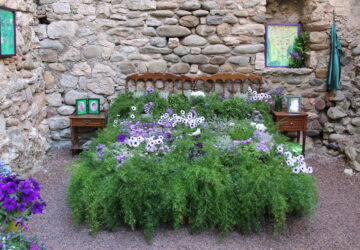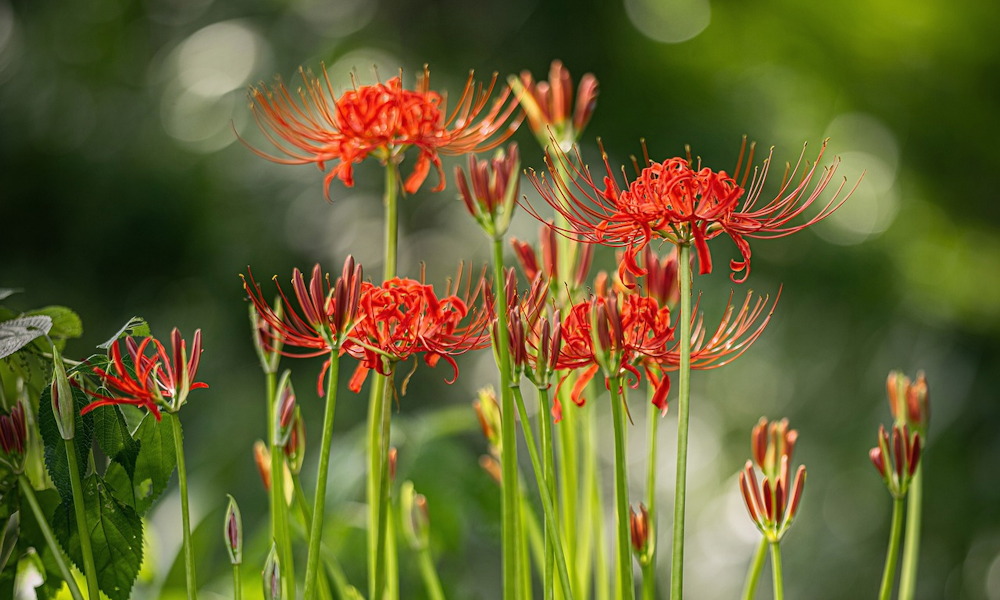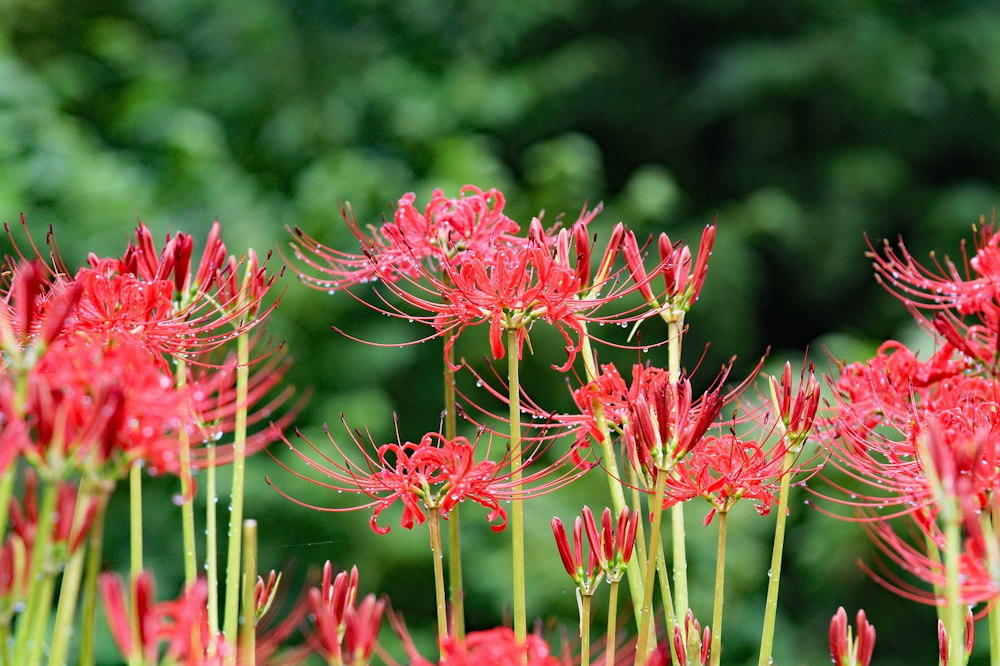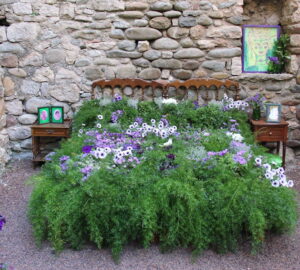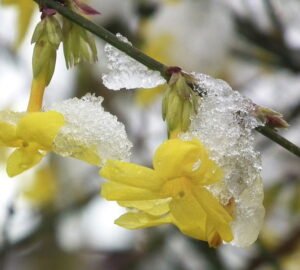Welcome, plant enthusiasts! Today, we’re diving into the captivating world of the red spider lily, a plant that enchants gardeners with its striking appearance and fascinating history. Whether you’re a seasoned horticulturist or a budding green thumb, the red spider lily is sure to pique your interest.
Names and Origins: The Many Identities of Lycoris Radiata
The red spider lily, scientifically known as Lycoris radiata, is also referred to by several other names, including the hurricane lily and the resurrection lily. This intriguing plant is native to China, Korea, and Nepal, but it has found a welcoming home in gardens around the world, particularly in the southern United States and Japan.
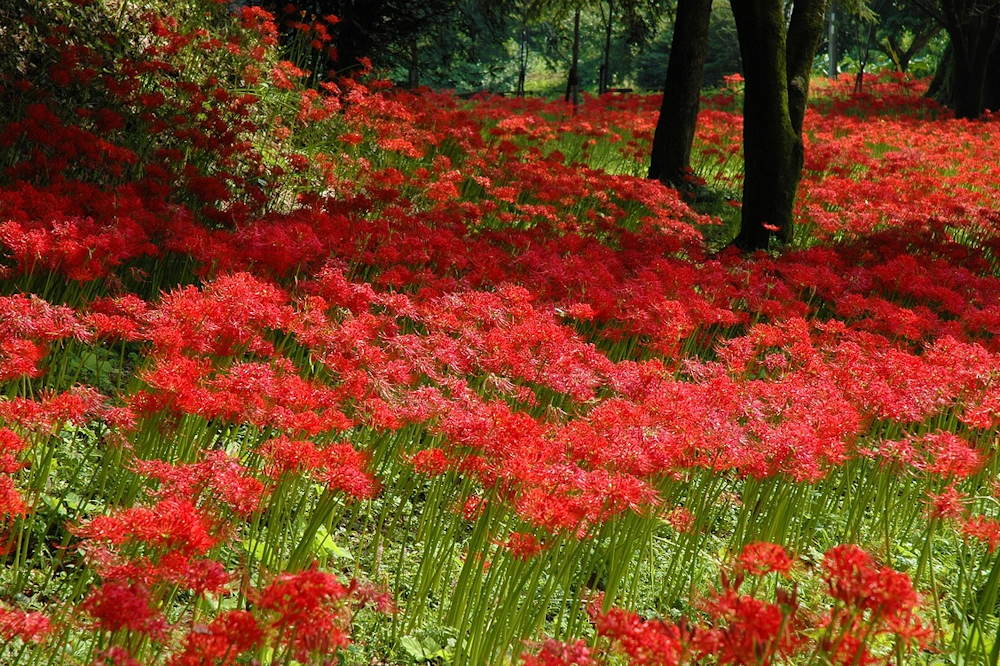
A Vision in Red: Describing the Red Spider Lily
One look at the red spider lily, and it’s easy to see why it’s so beloved. The plant boasts vibrant, scarlet-red flowers that bloom on tall, naked stems, with long, curved stamens that resemble spider legs, giving it its common name. These flowers rise dramatically from the ground, creating a stunning visual effect that is both ethereal and bold.
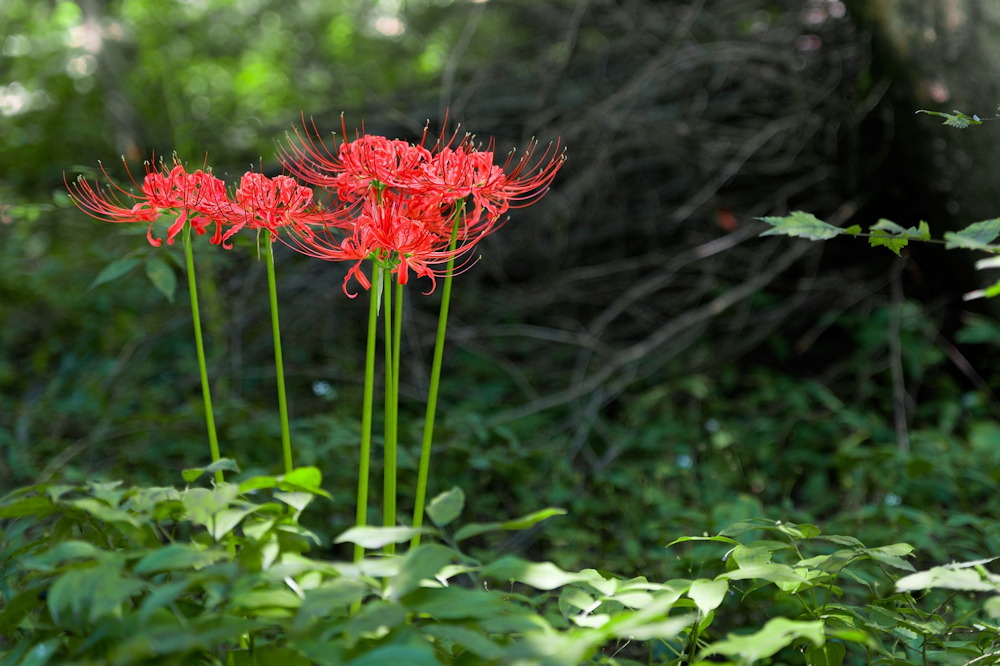
The leaves of the red spider lily are equally distinctive, emerging after the flowers have faded. They are long, narrow, and dark green, providing a lush, verdant backdrop to the garden during the cooler months.

The Drama of Blooming Season
One of the most enchanting aspects of the red spider lily is its unique blooming cycle. These flowers typically bloom in late summer to early fall, often triggered by the first heavy rains of the season. This sudden burst of color is why they’re sometimes called hurricane lilies, as they often bloom around hurricane season.
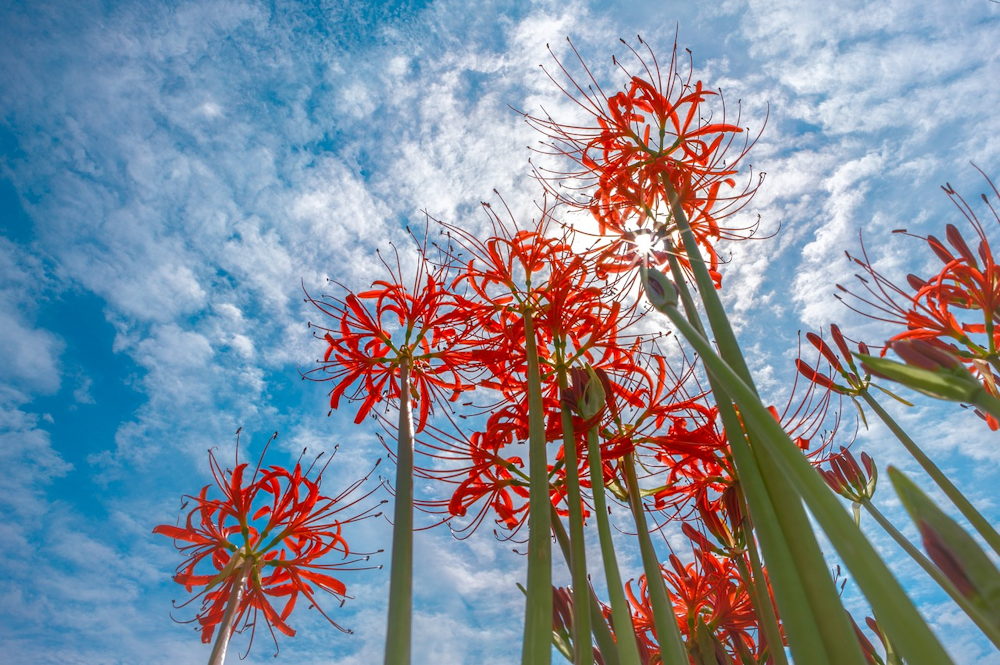
Green Thumb Guide: Caring for the Red Spider Lily
Caring for the red spider lily is relatively straightforward, making it an excellent choice for gardeners of all experience levels. Here are some key tips:
- Planting: Choose a location with well-drained soil and partial to full sunlight. Plant the bulbs about 4-6 inches (10-15 cm) deep and space them around 6 inches (15 cm) apart.
- Watering: While the bulbs are dormant, they require minimal water. During the growing season, ensure the soil remains moderately moist.
- Soil: This plant thrives in well-drained, loamy soil that is rich in organic matter.
- Temperature: The red spider lily prefers temperate climates. In colder regions, mulch the planting area to protect the bulbs from freezing temperatures.
- Maintenance: Minimal maintenance is needed. Allow the foliage to die back naturally after flowering, as this helps replenish the bulb for the next year.

Fascinating Facts About the Red Spider Lily
- Myth and Folklore: In Japan, the red spider lily is often associated with death and the afterlife, believed to guide souls to reincarnation.
- Medicinal Use: Historically, parts of the plant have been used in traditional Chinese medicine, though caution is advised as the plant is toxic if ingested.
- Botanical Marvel: Unlike many other bulbs, the red spider lily’s leaves and flowers appear at different times, with leaves emerging only after the flowers have bloomed.
- Pest Resistant: This plant is remarkably resistant to pests and diseases, making it a reliable choice for gardeners.
- Long-Lived: Once established, red spider lily bulbs can live and bloom for many years, often spreading and creating beautiful colonies.
- Pollinator Friendly: The flowers attract bees and other pollinators, contributing to the health of your garden ecosystem.
Adding a Touch of Magic to Your Garden
The red spider lily is a plant of extraordinary beauty and fascinating lore. Its striking flowers and easy-care nature make it a fantastic addition to any garden. Whether you’re captivated by its dramatic blooms or intrigued by its storied past, the red spider lily is sure to bring a touch of magic to your outdoor space. Happy gardening!



